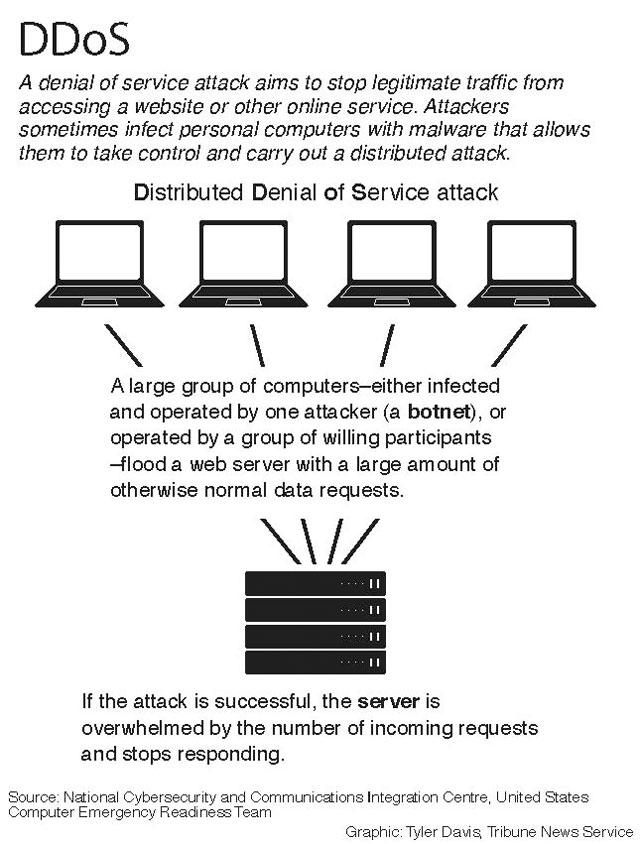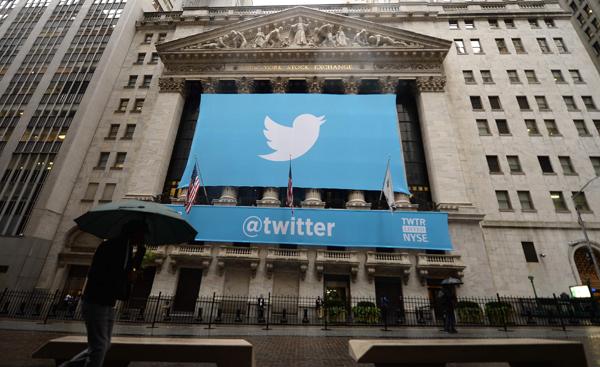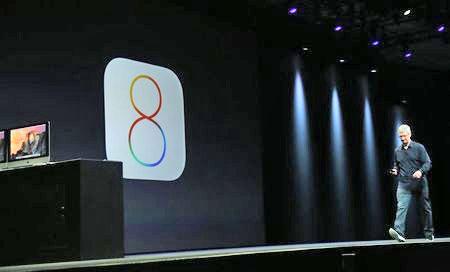You are here
Global Internet outage hits Jordan
By Mohammad Ghazal , Reuters - Oct 22,2016 - Last updated at Oct 22,2016
 AMMAN —Twitter service in Jordan was disrupted on Friday as a coordinated assault by hackers took down several of the world’s most-visited websites.
AMMAN —Twitter service in Jordan was disrupted on Friday as a coordinated assault by hackers took down several of the world’s most-visited websites.
Tweeps in Jordan reported a several-hour outage late Friday. Some expressed their annoyance, while others said that the outage gave them an opportunity to socialise and go back to their habits before the era of social networks, such as reading.
“When Twitter service was disrupted I got the chance to sit and talk to my family. I found out that they are awesome,” Raniah Sultan (@Raniahsultan) tweeted.
For Elham (@massad_e), the disruption was not a big deal.
“It helped me return to my human, normal habit of reading,” Elham tweeted.
Several other tweeps said the disruption was not an issue as they could use other social networking sites instead.
Of around 8 million Internet users in Jordan, some 200,000 use Twitter. There are more than 5 million Facebook accounts in Jordan.
“I switched to using Facebook. I almost shared everything I saw on Facebook,” Hamzeh Abu Hannieh (@hamzehabuhanni9) tweeted.
On Friday, hackers unleashed a complex attack on the Internet through common devices like webcams and digital recorders and cut access to some of the world’s best known websites, Reuters reported, labelling the attack a stunning breach of global Internet stability.
The attacks struck Twitter, Paypal, Spotify and other customers of an infrastructure company in New Hampshire called Dyn, which acts as a switchboard for Internet traffic, it reported.
The attackers used hundreds of thousands of Internet-connected devices that had previously been infected with a malicious code that allowed them to cause outages that began in the Eastern US and then spread to other parts of the country and Europe, according to the news agency.
“The complexity of the attacks is what’s making it very challenging for us,” Reuters quoted Dyn’s chief strategy officer, Kyle York, as saying.
The US Department of Homeland Security and the Federal Bureau of Investigation said they were investigating.
Friday’s outages were intermittent and varied by geography. Users complained they could not reach dozens of Internet destinations including Mashable, CNN, The New York Times, The Wall Street Journal, Yelp and some businesses hosted by Amazon.com Inc.
Dyn said attacks were coming from millions of Internet addresses, making it one of the largest attacks ever seen.
Security experts said it was an especially potent type of distributed denial-of-service attack, or DDoS, in which attackers flood the targets with so much junk traffic that they freeze up.
Dyn said that at least some of the malicious traffic was coming from connected devices, including webcams and digital video recorders that had been infected with control software named Mirai.
Security researchers have previously raised concerns that such connected devices, sometimes referred to as the Internet of Things, lack proper security.
The Mirai code was dumped on the Internet about a month ago, and criminal groups are now charging to employ it in cyber attacks, said Allison Nixon, director of security research at Flashpoint, which was helping Dyn analyse the attack.
Dale Drew, chief security officer at communications provider Level 3, said that other networks of compromised machines were also used in Friday’s attack, suggesting that the perpetrator had rented access to several so-called botnets.
The attackers took advantage of traffic-routing services such as those offered by Alphabet Inc.’s Google and Cisco Systems Inc.’s OpenDNS to make it difficult for Dyn to root out bad traffic without also interfering with legitimate inquiries, Drew said, according to Reuters.
Related Articles
SAN FRANCISCO — Cyber attacks pounded the underpinnings of the Internet on Friday, crippling Twitter, Netflix and other major websites with
The BBC and a handful of other media outlets said it was the platform's longest ever outage. Reuters was not immediately able to verify those claims.
Cybersecurity researchers have warned that a bug in Apple Inc.'s iOS operating system makes most iPhones and iPads vulnerable to cyberattacks by hackers seeking access to sensitive data and control of their devices.

















